In the Latter Day Saint movement, an evangelist is an ordained office of the ministry. In some denominations of the movement, an evangelist is referred to as a patriarch. However, the latter term was deprecated by the Community of Christ after the church began ordaining women to the priesthood. Other denominations, such as The Church of Jesus Christ (Bickertonite), have an evangelist position independent of the original "patriarch" office instituted movement founder Joseph Smith.
In the Latter Day Saint movement, the President of the Church is generally considered to be the highest office of the church. It was the office held by Joseph Smith, founder of the movement, and the office assumed by many of Smith's claimed successors, such as Brigham Young, Joseph Smith III, Sidney Rigdon, and James Strang. Several other titles have been associated with this office, including First Elder of the church, Presiding High Priest, President of the High Priesthood, Trustee-in-Trust for the church, Prophet, Seer, Revelator, and Translator. Joseph Smith was known by all of these titles in his lifetime.

Joseph Fielding Smith Sr. was an American religious leader who served as the sixth president of the Church of Jesus Christ of Latter-day Saints. He was a nephew of Joseph Smith, founder of the Latter Day Saint movement, and the last LDS Church president who had personally known him.

Hyrum Smith was an American religious leader in the Church of Jesus Christ of Latter Day Saints, the original church of the Latter Day Saint movement. He was the older brother of the movement's founder, Joseph Smith, and was killed with his brother at Carthage Jail where they were being held awaiting trial.

George Franklin Richards was a member of the Quorum of the Twelve Apostles of the Church of Jesus Christ of Latter-day Saints from April 9, 1906, until his death. He also served as Acting Presiding Patriarch of the LDS Church from 1937 to 1942 and President of the Quorum of the Twelve from May 25, 1945, until his death.
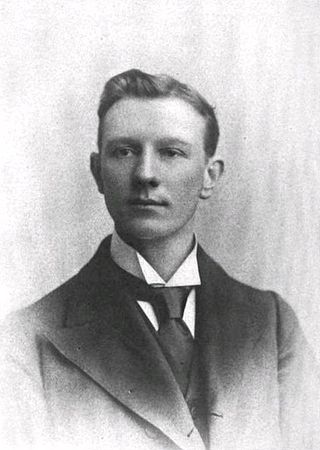
Hyrum Mack Smith was a member of the Quorum of the Twelve Apostles of the Church of Jesus Christ of Latter-day Saints.

William Marks was an early leader in the Latter Day Saint movement and was a member of the First Presidency in the Reorganized Church of Jesus Christ of Latter Day Saints. Marks is mentioned in the Doctrine and Covenants in sections 117 and 124 of the Church of Jesus Christ of Latter-day Saints edition and in section 115 of the Community of Christ edition.
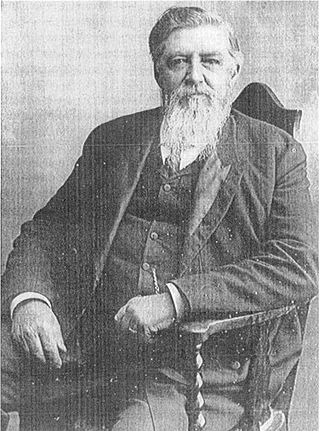
Alexander Hale Smith was the third surviving son of Joseph Smith and Emma Hale Smith. Smith was born in Far West, Missouri, and was named after Alexander Doniphan, who had refused an order to execute Joseph Smith, and then was Joseph's defense attorney during Joseph's incarceration at Liberty Jail. Alexander Smith became a senior leader of the Reorganized Church of Jesus Christ of Latter Day Saints. Smith served as an apostle and as Presiding Patriarch of the church. He became religiously inclined after the April 1862 death of his older brother Frederick G. W. Smith, who had not been baptized, and was baptized on May 25, 1862, in Nauvoo, Illinois, by another older brother, Joseph Smith III.
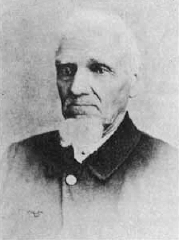
William Smith was a leader in the Latter Day Saint movement and one of the original members of the Quorum of the Twelve Apostles. Smith was the eighth child of Joseph Smith Sr. and Lucy Mack Smith and was a younger brother of Joseph Smith Jr., the founder of the Latter Day Saint movement.
In the Latter Day Saint movement, the Presiding Patriarch is a church-wide leadership office within the priesthood. Among the duties of the Presiding Patriarch are to preside in council meetings, ordain other patriarchs, and administer patriarchal blessings.
The succession crisis in the Latter Day Saint movement occurred after the killing of the movement's founder, Joseph Smith, on June 27, 1844.
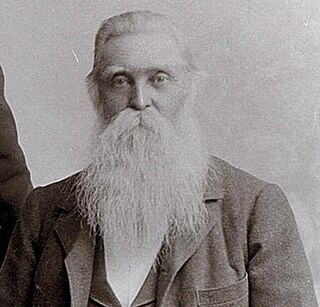
John Smith, was the fifth Presiding Patriarch of the Church of Jesus Christ of Latter-day Saints. His father was Hyrum Smith, the older brother of Joseph Smith, the founder of The Church of Jesus Christ of Latter Day Saints. Having served for 56 years, he was the longest serving Presiding Patriarch in the history of the LDS Church. Smith traveled west to Winter Quarters and then Salt Lake City with the Mormon pioneers. He traveled with Heber C. Kimball's party and his step-mother Mary Fielding Smith. Smith joined the "Battalion of Life Guards" to protect the Latter-day Saints from Native Americans.
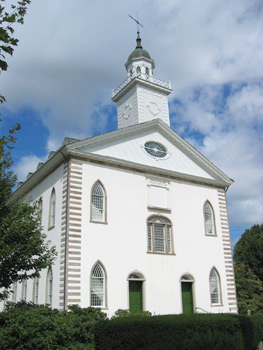
The history of Community of Christ, formerly known as the Reorganized Church of Jesus Christ of Latter Day Saints, covers a period of approximately 200 years. The church's early history traces to the "grove experience" of Joseph Smith, who prayed in the woods near his home in Palmyra, New York, in the early-19th century. Several accounts of this experience have surfaced over the years. Most of the accounts share a common narrative indicating that when he went to the woods to pray, he experienced a period of encountering evil or despair, but then experienced an epiphany or vision in which he came to know and understand God's goodness. Later, as an adult, Smith founded the Church of Christ on April 6, 1830.
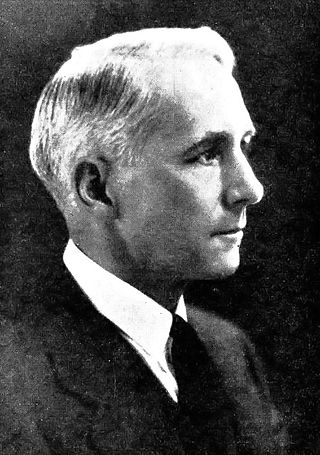
Hyrum Gibbs Smith was Presiding Patriarch of the Church of Jesus Christ of Latter-day Saints from 1912 until his death.
In the Latter Day Saint movement, the Quorum of the Twelve is one of the governing bodies of the church hierarchy organized by the movement's founder Joseph Smith and patterned after the Apostles of Jesus. Members are called Apostles, with a special calling to be evangelistic ambassadors to the world.
Assistant President of the Church was a position in the leadership hierarchy in the early days of the Latter Day Saint church founded by Joseph Smith. The Assistant President was the second-highest authority in the church and was a member of the church's governing First Presidency. As President of the Church, Smith appointed two men to serve in the position of Assistant President. After Smith's death, most Latter Day Saint denominations discontinued the position of Assistant President of the Church.

The President of the Church is the highest office of the Church of Jesus Christ of Latter-day Saints. It was the office held by Joseph Smith, the church's founder. The church's president is its leader and the head of the First Presidency, its highest governing body. Latter-day Saints consider the president of the church to be a "prophet, seer, and revelator" and refer to him as "the Prophet", a title that was originally given to Smith. When the name of the president is used by adherents, it is usually prefaced by the title "President". Russell M. Nelson has been the president since January 14, 2018.
Originally, the office of Presiding Patriarch was one of the highest and most important offices of the church's priesthood. When a Presiding Patriarch has existed, the church has sustained the person as a prophet, seer, and revelator. In the history of the LDS Church, there have been eight Presiding Patriarchs, three Acting Presiding Patriarchs, and one Patriarch Emeritus.

The following outline is provided as an overview of and topical guide to the life and influence of Joseph Smith:
Apostolic succession in the Church of Jesus Christ of Latter-day Saints is the process of transition to a new church president when the preceding one has died.


























